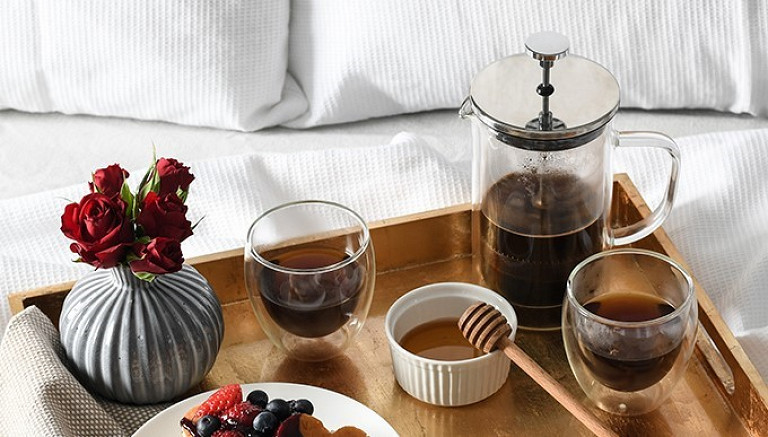ProCook Help Hub
The latest inspiration and advice from the experts at ProCook
A cafetiere is a great way to brew delicious coffee within the comfort of your own home, but what exactly is a cafetiere and how do you use one properly? Originating from France, a cafetiere has become a well-loved and utilised coffee brewing device throughout the world. Using a cafetiere is still one of the simplest ways to make great tasting coffee, especially when you have guests.
For those who may have never used a cafetiere themselves or are finding their cafetiere coffee too bitter, our guide will explain how to use a cafetiere, the best ways to store your coffee beans, and how to make the best cafetiere coffee yet. We also have a coffee machine buying guide, perfect for those who are unsure on which coffee maker is best for them.
What is a Cafetiere?
A cafetiere, also known as a French press or coffee press, is a popular coffee making device that is commonly found in cafes, restaurants and within people's homes. When used effectively, you can brew yourself flavoursome coffee without much effort. Cafetieres come in various sizes and styles, so whether you are wanting to learn how to make cafetiere coffee for yourself or to impress your guests, learning how to utilise a cafetiere is a must.
Traditionally, cafetieres include a glass centre, which is typically called a cafetiere glass. This cafetiere glass is held in place and elevated from the surface by its metal exterior and includes a heat resistant handle, making it easier to pick up your cafetiere and pour your coffee. A cafetiere also includes a filter and plunger so that you can safely and slowly press down the coffee, keeping the ground coffee in place while you pour - stopping any granules from leaking into your coffee cup.

When it comes to using a cafetiere, you want to ensure that you are making the most out of your coffee beans and avoiding over-extraction (the act of brewing your coffee for too long which results in taking too much of the soluble flavours out from the coffee, leaving behind bitter tasting coffee). You will also want to learn how to achieve the correct temperature, saving you from accidentally burning your coffee grounds which can also cause your coffee to taste bitter.
There is a general rule when it comes to using a cafetiere, but the amount of water and ground coffee that you use depends on the size of your cafetiere. To help you use a cafetiere, we have prepared the following step-by-step guide.
Type of coffee grind:
Coarse (to avoid over-extraction).
Amount of coffee needed:
36 grams per 500ml (72 grams of ground coffee per litre of water).
Total time to brew:
4 minutes.
1. Boil your kettle and leave it to rest for a minute (or heat your water to 93°C). The water should be hot but not boiling, as this may scold the coffee grounds and create an unpleasant, bitter taste.
2. Add your coarse ground coffee into your cafetiere.
3. Add 1/3 of the water to the cafetiere. Swill the water and leave for 30 seconds.
4. Top up the cafetiere with the remaining water and leave for another 30 seconds.
5. Stir the coffee grounds to break the 'crust' on the top and leave for a further two minutes as this encourages the grounds to fall and settle at the bottom of the cafetiere.
6. Place the cafetiere's lid on top and make sure it is firmly in place. Once secure, slowly begin to push the plunger down, leaving a small gap between the coffee grounds and the bottom of the cafetiere. Pushing the plunger down too quickly can force water out the top of the cafetiere.
7. Pour your coffee and enjoy!
We provide a variety of cafetieres, varying in sizes. Whether you are after a cafetiere with a 3 cup or 350ml capacity, 6 cup or 600ml, or a 12 cup or 1.5ltr, we have a size that fits your wants and needs. We also have replacement cafetiere glasses and filters for your convenience, so if you were to accidentally break or lose them, they are easily replaceable.
ProTip: Kitchen timers are effective pieces of kitchen equipment when making coffee, helping you stick to the exact timings required for perfectly brewed cafetiere coffee. Accuracy can greatly improve the quality and taste of your coffee.
How Do I Use a Cafetiere?
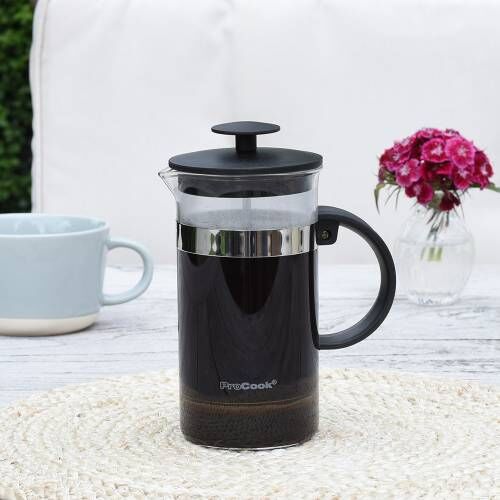
How Much Coffee in a Cafetiere?
Again, the amount of coffee you place in your cafetiere depends on its size. As previously mentioned, the general rule is 36 grams of coarse ground coffee for every 500ml, or 72 grams of ground coffee per litre of water. Using digital scales to weigh your medium coffee grounds will not only ensure consistency, but it will also help to minimise waste. Weighing your coffee beans before grinding can save you from grinding too much coffee and improve accuracy.
ProTip: It may be tempting to add an extra spoonful of coffee if you want to make it stronger, but this can be wasteful, resulting in you using more coffee than needed and needing to buy more coffee grounds sooner. Rather, you could find a type of coffee with a high enough intensity and strength that suits your tastes.
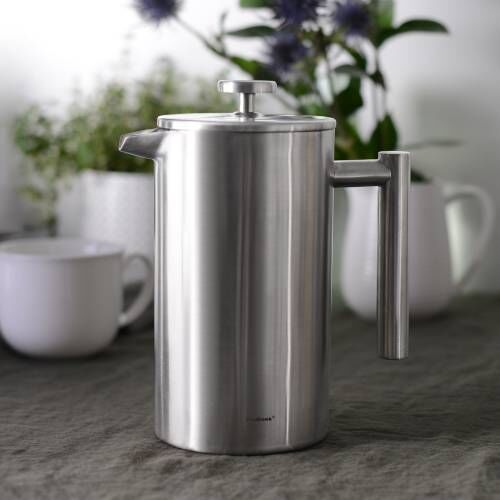
What are the Different Types of Cafetieres?
A cafetiere has a very noticeable design - a cafetiere glass, metal exterior, heat resistant handle and a lid with a filter and plunger. However, we offer a variety of styles so that you can find a coffee cafetiere that suits your kitchen and individual taste.
As well as a traditional looking cafetiere, we also have cafetieres that are completely made from double-walled glass (minus the lid and plunger) or stainless steel (for a modern look). We also have a variety of sizes, so whether you are looking for a 3 cup cafetiere or an 8 cup cafetiere, we'll have something for you.
Check out our cafetieres:
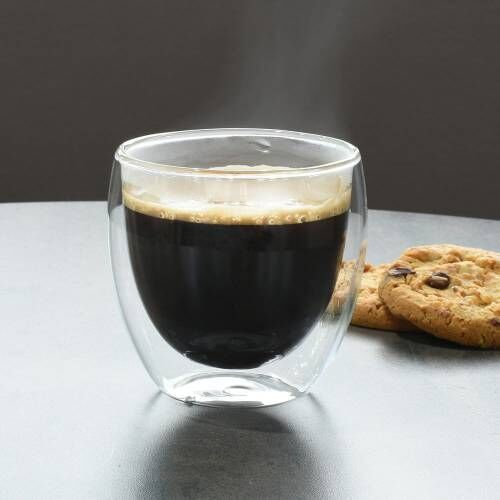
Our Double Walled Glass Cup Set of 4, perfect for keeping your coffee warm.
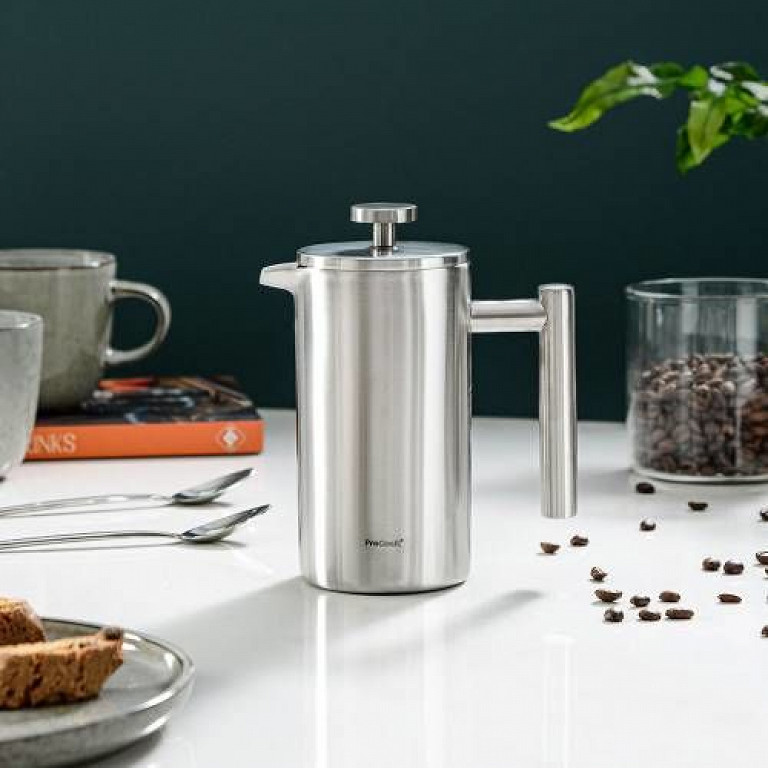
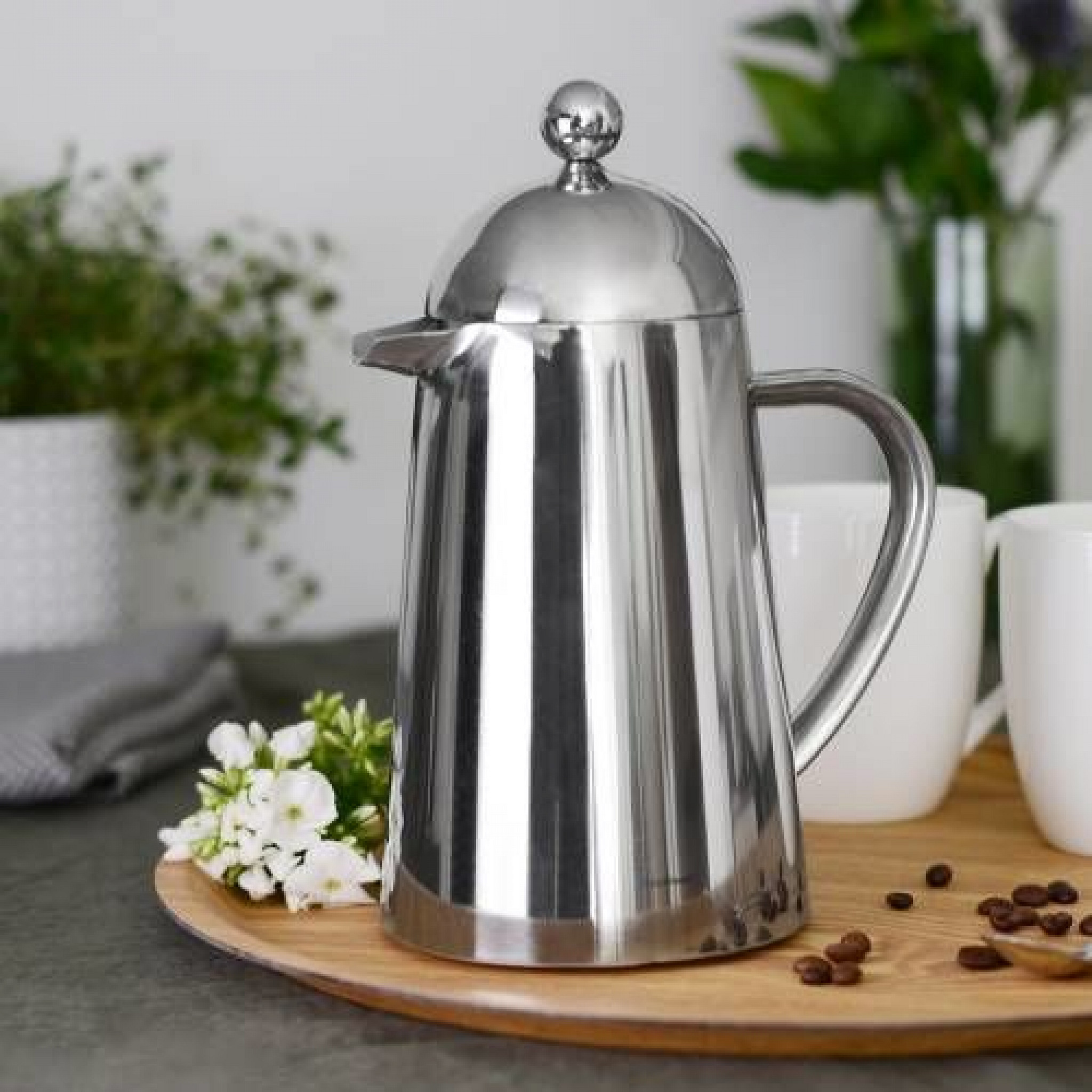
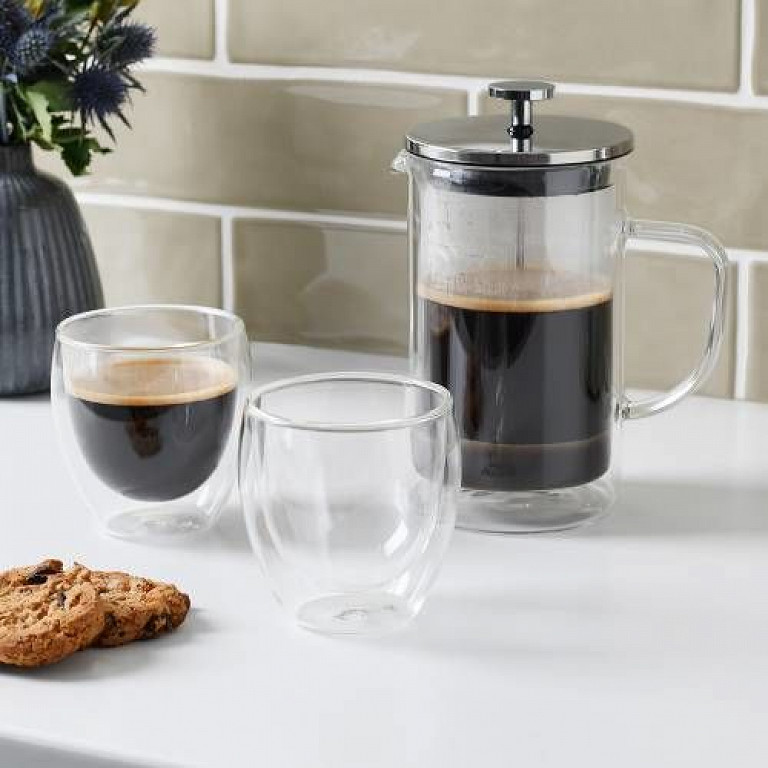
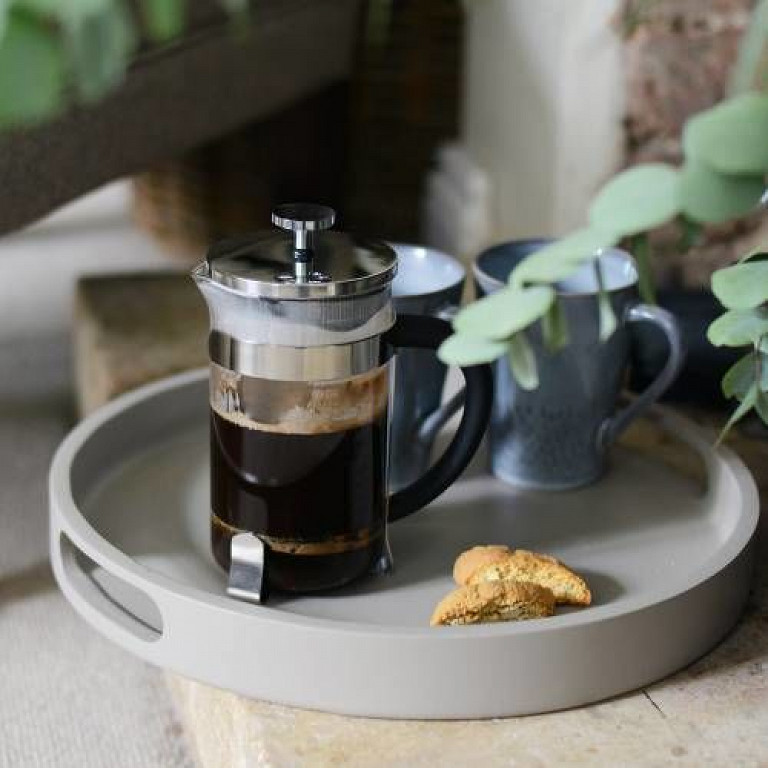
How to Store Coffee
Your coffee bean's greatest enemies are air, moisture, direct sunlight, and heat, which is why properly storing your coffee is an integral part of protecting the flavour and texture of your coffee beans or ground coffee. Coffee beans begin to lose freshness almost immediately after roasting, which is why you should purchase smaller batches of freshly roasted coffee, rather than stockpiling.
Incorrect storage can cause your coffee to lose flavour or take on the flavour of surrounding foods and smells, which is why proper storage is essential. By properly storing your coffee beans, you can preserve your beans' fresh roasted flavour for as long as possible.
Contrary to popular belief, you should never store coffee beans in the freezer as they can become porous and absorb the flavour of surrounding foods in storage. Freezing your coffee beans can also cause them to crack and break, impairing their flavour.
How to Store Coffee Beans
Storing your coffee beans in a sealed container is best. You want to ensure that the container is airtight and does not allow any air to seep through. What's more, your coffee beans should be stored at room temperature (20 to 25C) and out of direct sunlight.
We offer a variety of round glass storage jars, ranging in sizes, so you can keep your coffee beans away from air and moisture for optimal flavour and taste. All our storage jars include a strong silicone seal that stops any air or moisture from entering the jars and ruining the integrity of the beans.
ProTip:
Grinding fresh is always the best way to go as fresh coffee has better aromas and tastes. Not only should you grind fresh, but you should only grind the exact amount as this can have a huge impact on flavour. Prematurely grinding coffee and leaving it for long amounts of time causes aromas and flavours to be lost.
How to Store Ground Coffee
If you buy ground coffee, the best way to keep your bag sealed is by using a coffee bag clip that is specifically designed to keep air and moisture out from the bag. By using a coffee bag clip to seal your bag of ground coffee, it will stay fresher for longer. You can also use a coffee bag clip to store your bag of coffee beans too.
How to Froth Milk
A cafetiere is ideal for brewing black coffee, but that doesn't mean you can't add milk or plant milk. In fact, you can simply add your preferred milk to your coffee for a simple cafe au lait (coffee with milk) or, if you are wondering how to froth milk at home, you can use a milk frother to make barista-style frothed milk for your coffee at home - perfect for lattes and cappuccinos.
A milk frother and milk jug are the simplest ways to make foamed milk. Milk tends to double in volume once foamed, so fill your milk jug to a third of its capacity before you use your milk frother. If your foam becomes too thick, add a dash of cold milk to minimise it.
How to Do Latte Art at Home
One of the simplest ways to enhance the presentation of your cappuccino or latte is by using coffee stencils and a chocolate shaker. Why not try finishing off your coffee with some grated nutmeg, cinnamon, or orange zest on top for a unique twist?
Latte art can be tricky to master, but it can be a fun way to enhance the drinking experience (the milk providing a delicate and enjoyable texture) and add a creative element for you and your guests to enjoy. When it comes to making latte art at home, practicing pouring methods and the correct angle can make latte art much easier. Here's our guide to perfecting heart-shaped latte art.
1. Make frothed milk in a milk jug.
2. Hold your coffee cup (filled with coffee) and tilt it at the angle of 45 degrees with one hand while holding the milk jug in the other.
3. The milk jug needs to be higher than the coffee cup when you start to pour the milk into the centre of your coffee cup. Once the coffee cup is nearly half full, lower the milk jug. You should start to see a foam appearing on the top of the coffee.
4. Start to shake your hand holding the milk jug left to right. Once the cup is almost full, stop shaking your hand holding the milk jug and quickly pour the milk through the centre of the foamed milk you’ve poured into the centre of your coffee cup. The milk should drag the milk to the bottom, creating the point of the heart.
You might need these:
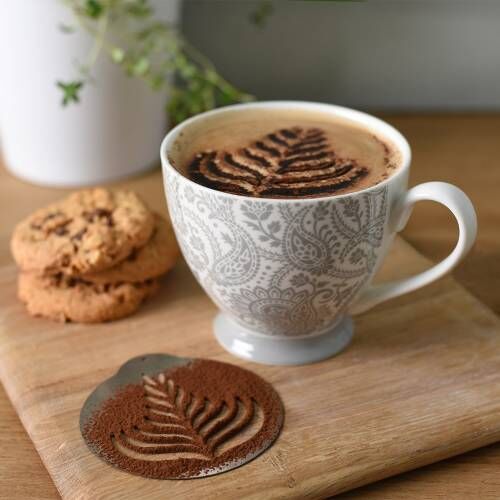
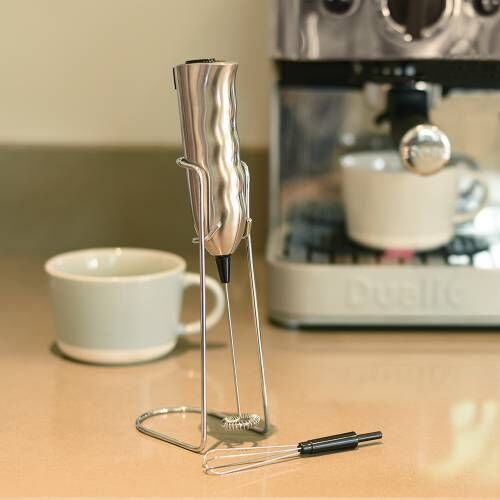
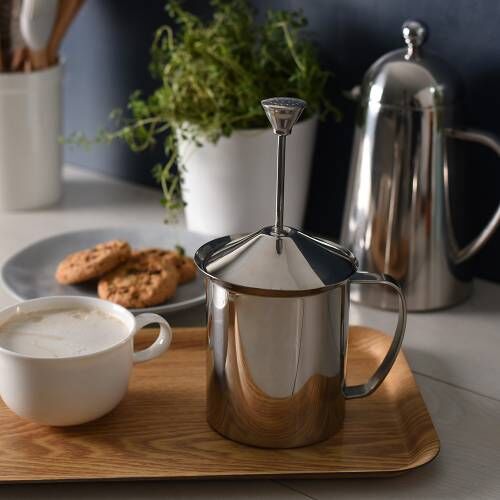
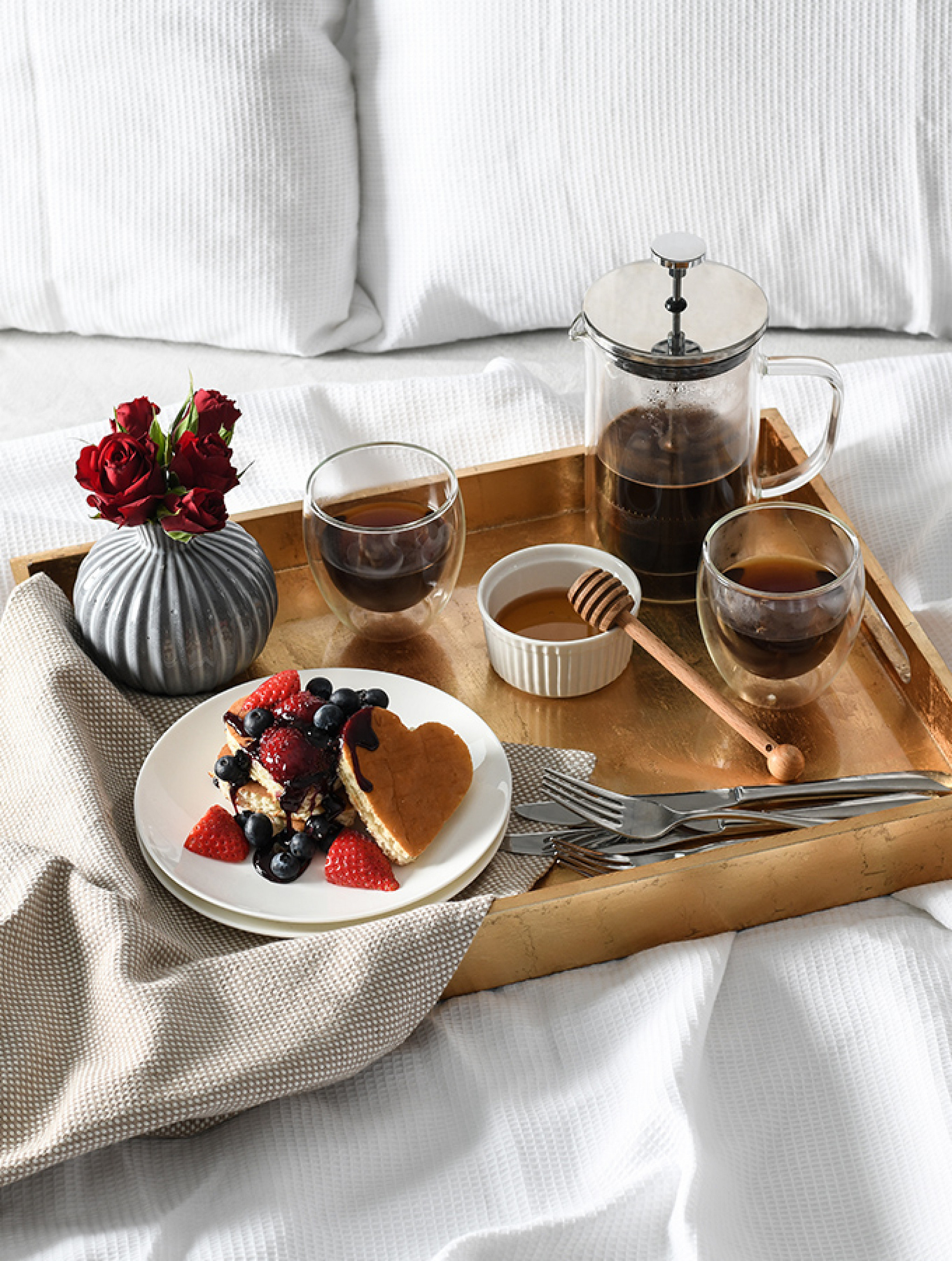
Our beautiful cafetiere gift set with two double walled cups, perfect for breakfast in bed.


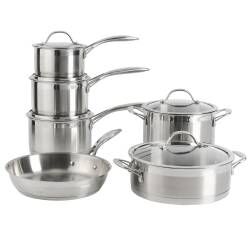
 Electricals
Electricals
 Coffee
Coffee
 Mixers and Blenders
Mixers and Blenders
 Kettles and Toasters
Kettles and Toasters
 Cooking
Cooking
 Small Appliances
Small Appliances
 Cookware & Bakeware
Cookware & Bakeware
 Pots and Pans
Pots and Pans
 Speciality Cookware
Speciality Cookware
 Baking
Baking
 Roasting
Roasting
 Knives
Knives
 Knife Sets
Knife Sets
 Single Knives
Single Knives
 Knife Accessories
Knife Accessories
 Tableware
Tableware
 Single Items
Single Items
 Serveware
Serveware
 Table Accessories
Table Accessories
 Outdoor Dining
Outdoor Dining
 Drinkware
Drinkware
 Hot Drinkware
Hot Drinkware
 Cafetieres and Teapots
Cafetieres and Teapots
 Drink Accessories
Drink Accessories
 Accessories
Accessories
 Kitchen Utensils
Kitchen Utensils
 Tools and Gadgets
Tools and Gadgets
 Storage
Storage
 Cleaning
Cleaning
 Summer desserts and baking
Summer desserts and baking
 Offers
Offers
 Gifting
Gifting
